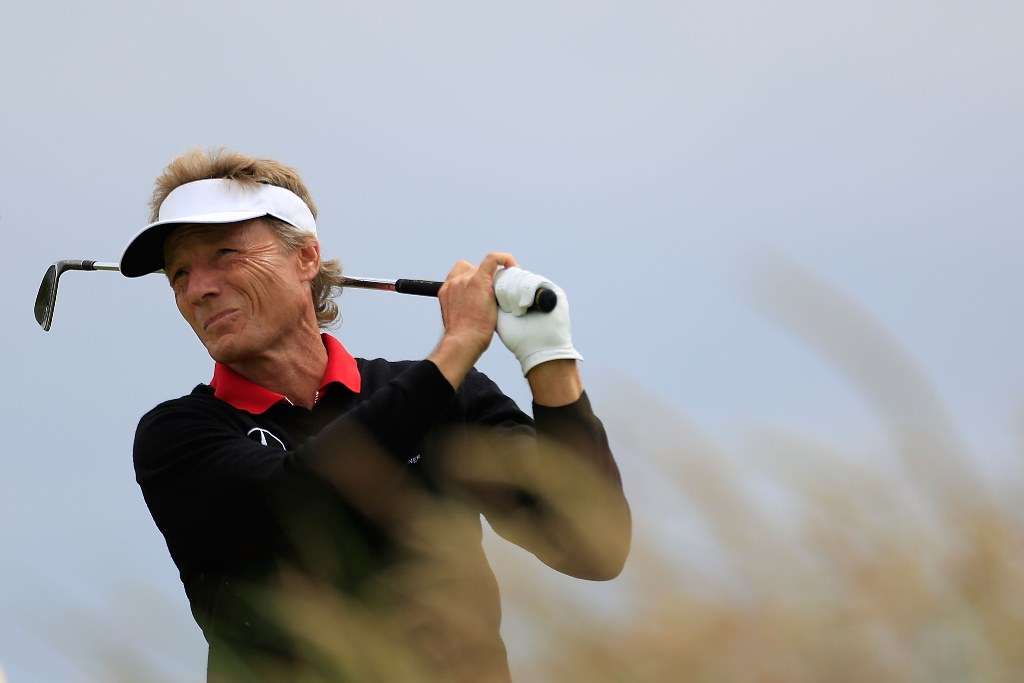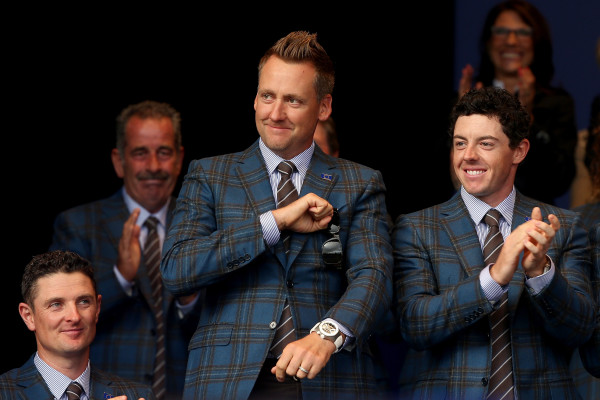Featured
MacLaren plans to revitalise Senior Tour

(Photo by Getty Images)
By John Huggan
Ten years ago the European Senior Tour schedule boasted 17 tournaments. Five years later, that figure was up to 22. But this season, the over-50 set will tee up in only 13 events, a relatively meagre number that includes last week’s Senior Open Championship at Carnoustie and two other Majors, which are part of the US-based Champions Tour. It is a downward curve that reflects the toughness of the market in which the seniors are operating and, perhaps, the lack of star quality on a circuit that nevertheless carries an obvious nostalgic appeal to fans of a certain age.
Such a view is shared by many, including European Tour chief executive Keith Pelley, who attended a Senior Tour player meeting at the end of last year. It was a lively get-together, the players taking the opportunity to give the Canadian a very frank assessment of where the tour was.
Pelley listened. And, instead of walking away from a tough induction saying that this wasn’t working any longer, he said the opposite. Which is not to say that rebuilding the circuit is going to be easy. Far from it. But the Senior Tour is surely due a bit of good fortune. Over the past few years some unfortunate circumstances have hindered significant progress.
“The greatest sadness for the European Senior Tour is that Seve (Ballesteros) never came out to play,” says former PGA champion Tony Johnstone. “He was the biggest draw card of his generation and would have made a huge difference to the tour. It wouldn’t have mattered what he shot. The people would have flocked to see Seve. Everyone loved to watch him play, even on days when he was hitting it sideways.”
Throw in the fact that other elite members of the European Tour from days gone by – the likes of Ian Woosnam, Sir Nick Faldo, Colin Montgomerie, José María Olazábal, Bernhard Langer and Sandy Lyle – either never play senior events in Europe or make only occasional appearances, and the whole thing has understandably become less attractive to prospective sponsors.
Whatever, it is a state of affairs that the new Head of the Senior Tour, David MacLaren, is aiming to address. Formerly involved in “European Tour Properties”, a network of venues that pay a fee to the tour in return for being branded a “European Tour destination”, MacLaren – an avid Newcastle United fan, so familiar with adversity – is under no illusion about the magnitude of his task.
“We need a product that doesn’t need to be the same as the European Tour,” he says. “We need to identify our strengths. And we need to take them to market. I feel like I’m a sales person and in my basket of tools I need a group of players for whom there is real recognition in the marketplace.
“We need to have a field-size that is manageable. We need to focus on engagement with fans and pro-am partners and sponsors. We can’t say, ‘here is a tournament’ and expect the world to come to us. We’ve got to go to them. To do that, we need to be braver, more flexible and more pragmatic about what we have that is special. Yes, they are all great golfers. Yes, they have all been great golfers. And that makes it easier for me to sell a great day out to clients of a sponsor.”

Not playing its knight: Sir Nick Faldo rarely played on the Senior Tour (photo by Getty Images)
Indeed, it is in the ‘entertainment business’ that the future of the Senior Tour lies. More and more, events are built around the pro-ams in which the older players excel, their wealth of experience and anecdotes remain a delight to watch and listen to.
“It would not be unfair to say that more pro-am-formatted events would be a logical way for us to go,” says MacLaren. “That is nothing to be ashamed of. But there are different ways of achieving that. Some players think that is adding a day to tournament week so that we can have pro-ams on Wednesday and Thursday and then play 54 holes of strokeplay golf.
“Other players think we need to integrate the pro-ams into the tournaments more. The recent event in Germany was an example of that. I was there on the Saturday and noticed one thing. Normally when you go to an event on the weekend you see players with absolutely single-minded focus. And at first it did look a little awkward watching the pros with amateur partners. They had to both engage with their partners and be blinkered enough to compete as individuals.
“But they can do both. I saw Santiago Luna lose a ball then walk on to the green and help his amateur partner read his putt. I want 54 Santiago Lunas in my events. And I think we have them. We have a variety of players who have come from different backgrounds and it is a rich mix.”
There are some alternatives, of course. “We have considered finishing events on days other than Sundays,” continues MacLaren. “We have looked at playing events on Monday-Tuesday-Wednesday, which would mean not competing with the regular tours. I know the ladies’ tour have done that quite successfully. And that is a discussion we will re-visit.
“When I look at the ladies’ tour playing on different days and having floodlit nine-hole events, I think they are doing things we could too. What we have to be careful of though is not turning the Senior Tour into some sort of circus or sideshow. I want to keep the competitive core. But I think the guys are up for some format innovation. Trying things out will be easier on this tour than the regular tour. Then maybe they will be copying us down the road.”
That may be a stretch. But McLaren is not short of ideas. Some of which might even work. But not all. “I will make some mistakes,” he concedes. “I’d prefer to try ten things and have two fail than not try anything at all. What we lack in quantity of tournaments – which is an undeniable fact – I do think we composite in terms of quality.
“I do want to look at what represents entry level for the Senior Tour. That is key to our commercial formula. If we accept that we don’t have as many events as we would like, then there must be a financial element. I want to know what it would take to run an event that can take its place on the tour and have a prize fund acceptable to our members.
“The big question then is, do we want to have 30 events, 20 of which have a purse of €150,000 (£125,000)? Or do we want to have, say, 17 events with a minimum purse of €300,000 (£250,000)? Those are big questions, questions I need to answer soon.
“Lowering the age limit has been debated before. And it would be easy for me to say ‘yes’ to that question. But it is a debate we need to have with ourselves. Most of the players understand. Then there is reducing the field-size to 54 starters. That was an incredibly hard thing to do. And a brave thing to do.

New chief: David MacLaren, pictured with his daughter Meghan, a rising star of the game, wants to improve the Senior Tour (photo by Getty Images)
“I completely understand that there is a group of players who think it was the wrong thing to do because it has deprived them of playing opportunities. But if we look at it purely from the ‘how do we make the Senior Tour more successful and marketable?’ viewpoint, it is easier to do that with a smaller number. If I have an aspiration, it is that we leave it at 54 and if and when we get to the stage of having 25 events, then we can look at it again.”
Already, MacLaren knows pretty much exactly where everyone stands on most of the issues that need to be addressed. But keeping everyone happy is all but impossible.
Take the issue of course set-up. There is a such a range of abilities in every field, which means that it is difficult, if not impossible, to make things fair for everyone. Inevitably, there are those who want tougher courses and others who prefer things a little less penal.
“That is a difficult balance to find,” admits MacLaren, whose daughter, Meghan, holed the winning putt for Great Britain & Ireland in this year’s Curtis Cup.
“I want to be able to sell the product to sponsors as one of high quality. I prefer to see someone shoot 65 than 75. But how far do we go to make the guys look good? Is a hard course the best way to identify the best player?”
So many questions, all of which have to be answered soon. In a letter to the players in February, Pelley vowed to deliver – by 2018 – a schedule of 20-24 events. On that promise, MacLaren’s level of success or failure will be measured.
Tagged Bernard Langer, European Senior Tour, Keith Pelley, Nick Faldo, Senior Tour, Seve Ballesteros








